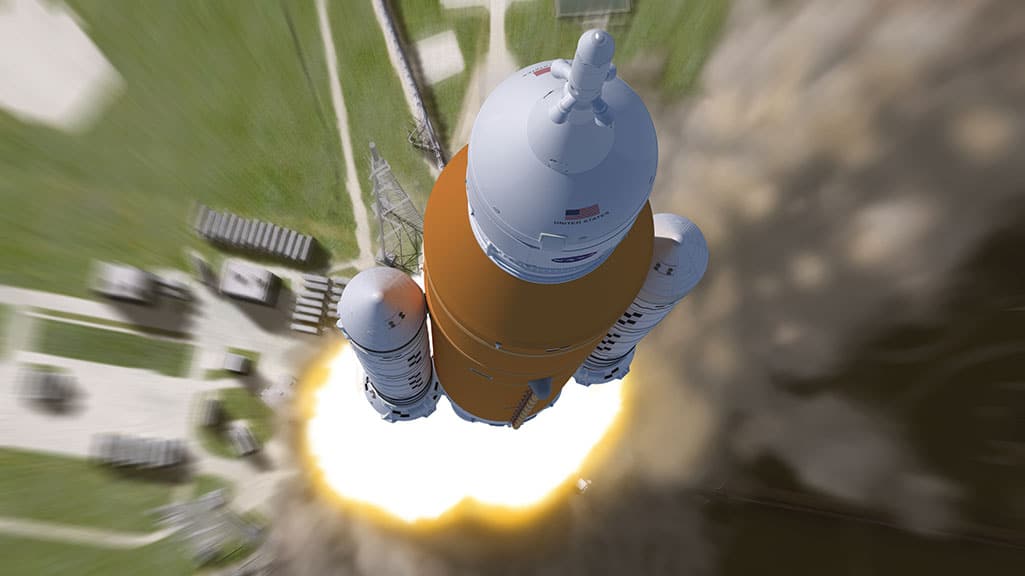The U.S. has big plans. It wants to send humans back to the moon and eventually further on to Mars. This starts with landing the first woman and first person of colour on the moon within the next few years.

NASA Artemis Missions
The aptly named Artemis is NASA’s designation for this new project following the last manned lunar program, Apollo. The Artemis I mission will be an unmanned journey to orbit the moon and this will be followed by the Artemis II manned mission. As a first step to carry out these missions, NASA has employed a number of major contractors to design and build the Space Launch System (SLS) rocket alongside the Orion crew capsule as the next generation of space vehicle to carry people back to the moon and beyond.
SLS will be the most powerful rocket NASA has ever built and Orion crew capsule the most sophisticated spacecraft. This will be one of the most innovative, complex systems the greatest engineering minds have put together.
It Really Is Rocket Science
NASA and its contractors have extensive experience with complex missions and are working to mitigate the risks associated with the mission. This includes the engineering design of the systems, assembly, integration and testing of hardware, as well as the training of operational personnel. Nevertheless, any space project comes with risk let alone such a sophisticated one carrying people to the moon and back safely. We all know space projects are “hard.”
Risk and Insurance
The difference between the Apollo missions five decades ago and the Artemis missions that will be carried out over the next decade is the scrutiny of public spending on such risky projects. This means public bodies such as NASA want to transfer more risk onto the commercial companies with whom they contract.
In recent times, liability risks on U.S. national space programs have been borne by the contractor(s) under their products liability insurance up to the policy limit, above which Public Law 85-804 indemnity would be granted by the U.S. government for each contractor.
For insurers, this has become an issue on such hazardous, multiple-contract programs where the insurers would be liable for hundreds of millions, or even billions, of dollars for each contractor. As a result, the potential accumulations on a single risk could be immense and the cost of such insurance could affect the feasibility of participation in such programs for the contractors.
A Smart Solution
Pooled limit policies are nothing new. In NASA’s space shuttle commercial era, contractors could declare their interest in a mission and buy third-party liability cover with an aggregate limit across all contractors under that mission, with U.S. government indemnity payable above that limit. Currently, launches covered by the U.S. Commercial Space Launch Competitiveness Act (CSLCA) that are conducted under Federal Aviation Administration (FAA) licenses require the launch service operator to carry a specified insurance limit. The policy would also cover all contractual parties under the launch subject to cross-waivers of liability between the parties.
Realising the potential risk and accumulation problem for insurers for the SLS/Orion program, the six prime contractors (Aerojet Rocketdyne, Boeing, Jacobs Engineering, Lockheed Martin, Northrop Grumman and Teledyne) were able come together and work with Marsh and Global Aerospace to propose and encourage NASA to adopt this approach of risk sharing for the program.
After several years’ work with NASA, the contractors were able to get approval for a single insurance policy to cover all contractors and subcontractors, as well as NASA and the U.S. government, with a combined single limit for each mission. Above this amount, and pursuant to Public Law 85-804, NASA has authorized the indemnification of the contractors for each mission. Just as in commercial missions, there are inter-party waivers applicable so as to prevent potentially complex inter-party claims.
Program Based Insurance Policies
This risk-sharing model has benefited all parties to date. No one party has to take an untenable amount of risk and commercial entities can transfer their risk to their insurers without concern as to the affordability of such insurance cover.
While the U.S. CSLCA is only applicable for launch activities, risks exist throughout the whole mission and not just the launch phase. As such, it seems sensible to have this sort of liability framework for whole missions.
With more commercialization of complex national and international space projects, including the Lunar Gateway and the Human Landing System for the Artemis program, as well as the new commercial space station in low-Earth orbit, not many commercial companies will be able to participate unless they can transfer some risk.
These projects are essential to encourage scientific and technological innovation, create economic opportunity and to inspire a new generation. To be able to support such projects, we would advocate a collaborative risk and liability approach for all space programs as demonstrated in the SLS/Orion program.